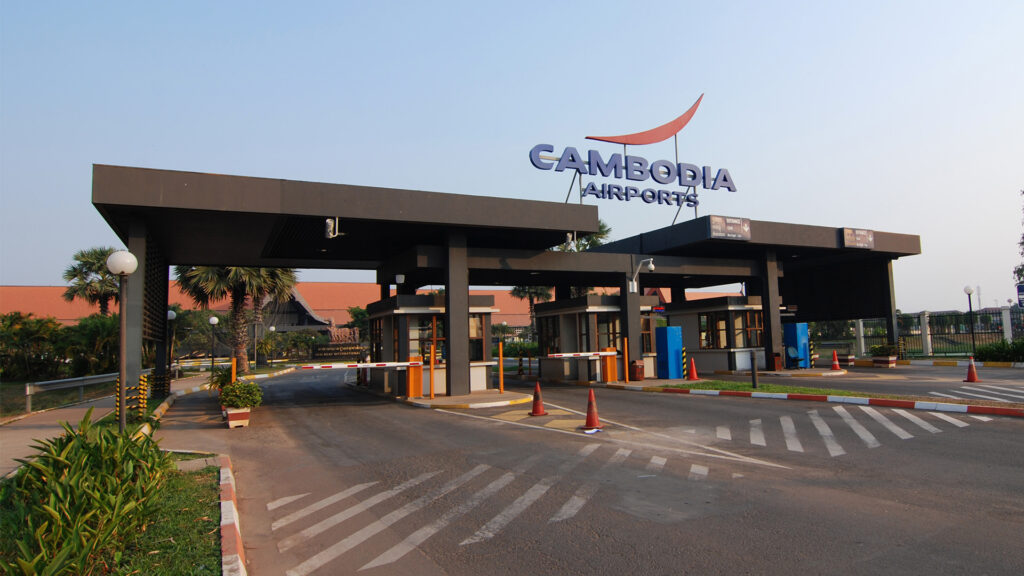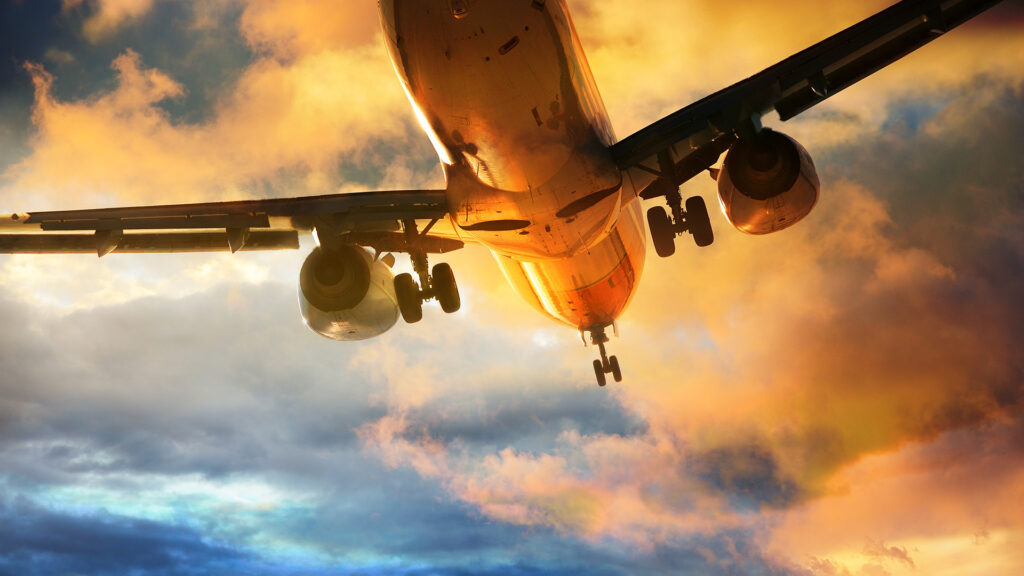
EU Emissions Trading Scheme becomes reality for airlines
The EU’s extension of the EU Emissions Trading Scheme (the “EU ETS” or the “Scheme”) to include the aviation industry took effect on 1 January 2012. The addition of airlines to the EU ETS has been the subject of intense and increasing criticism and attack – both at an industry and State level – over the last 12 months. The legal challenge to the validity of the EU ETS, as applied to aviation and which was instigated by the Air Transport Association of America, supported by the International Air Transport Association (IATA) and the National Airlines Council of Canada (NACC), finally concluded with the judgment of the European Court of Justice Grand Chamber published on 21 December 2011 (Air Transport Association of America e.a., v Secretary of State for Energy and Climate Change, Case C-366/10).
Not unexpectedly, the ECJ agreed with the earlier Opinion of the ECJ’s Advocate General in confirming the validity of the EU ETS. Complex questions as to the potentially extra-territorial nature of the Scheme as applied to airlines, whether it infringes sovereignty of airspace of non-EU countries, and whether the EU ETS involves an unlawful charge or a tax on fuel in breach of the Chicago Convention 1944 as well as of other bilateral air services agreements, have now been determined in favour of the EU legislators and the Scheme as applied to aviation has survived.
The ECJ case by no means brings to an end the legal and political disputes on this issue. Airlines continue actively to consider their options for further legal action within the EU; a dispute resolution process under the aegis of ICAO (the International Civil Aviation Organisation) continues to be a likely forum for further challenge; the US is pursuing its own legislation, which would prohibit US carriers from complying with the EU ETS, and certain international carriers and industry associations are threatening straightforward non-compliance.
Whilst the industry continues to explore ways in which the EU ETS might be attacked, the Scheme has now come into effect and its operation is not likely to be deferred pending resolution of further disputes as to its validity. As well as looking at the options for further challenges, the airline industry is therefore also faced with the requirement that they now participate fully in the Scheme.
The vast majority of airlines with operations to, from and within the EU are now required to monitor and report their emissions and to surrender emission allowances for any flights to and from EU airports. There are a few limited exemptions, such as operators with fewer than 243 flights to or from the EU for 3 consecutive 4-month periods and those operators with less than 10,000 tonnes of emissions per reporting year.
Although 2012 is the first year for which airlines are officially required to surrender allowances, the compliance process has been underway since 2009. We set out in this briefing the key dates and compliance issues that aircraft operators will face moving forward.
How does it work?
The EU ETS is a “cap and trade” system that imposes an emissions cap on industries covered by the Scheme. Emission allowances (“EUAs”) are allocated to each “operator” within a regulated industry for each reporting year. At the end of each reporting year, the operator must surrender allowances equal to its total emissions for the reporting year or face a penalty. Operators that emit more than their allocated emissions must procure additional allowances for surrender. This can be achieved by purchasing allowances at auction, purchasing allowances from other EU ETS participants or purchasing carbon offset credits such as CERs (certified emissions reductions) and ERUs (emissions reductions units).
CERs are credits issued by the United Nations for reductions in emissions generated by emissions abatement projects in developing countries. ERUs are also emission reduction credits issued by the UN but they represent reductions from projects in industrialised countries. One CER or ERU represents a reduction of 1 tonne of CO2 and can thus be surrendered by an aircraft operator to offset 1 tonne of its emissions. However, operators can only use CERs and ERUs for up to 15% of their compliance obligations in 2012 and up to 1.5% from 2013.
In addition to the requirement to surrender allowances, operators are subject to monitoring and other compliance obligations under the Scheme.
Although the overarching regulatory framework governing aviation in the EU ETS is EU Directive 2008/101/EC (the “Directive”), each Member State has transposed the requirements of the Directive into national law in order to set out in detail by national legislation in each State what operators must do to apply for free allowances, how to comply with the monitoring and reporting requirements and the process of surrendering allowances for compliance.
Administering Member States
Within each Member State, a designated “competent authority” is responsible for administering the EU ETS with respect to airlines. The competent authority in the UK is the Environment Agency.
Airlines are allocated to the Member State to and from which most of their flights operate. Given the role of London’s Heathrow Airport as a significant hub for flights into and out of Europe, a large number of airlines have been assigned to the UK. Germany, France, Spain and the Netherlands also act as administering States for a large number of carriers.
Allocation and auctioning of allowances
The EU ETS is divided into two trading periods for airlines: 2012-2013 and 2013-2020. For the 2012-2013 trading period, the total amount of aviation allowances (“EUAAs”) available to the airline industry is capped at 97% of the average annual aviation emissions for the years 2004-2006 (known as the “historical aviation emissions”), or 212,892,053 aviation allowances. During the 2012-2013 trading period, 85% of the total available allowances will be allocated to airlines free of charge and the remaining 15% will be auctioned by Member States.
For the 2013-2020 trading period (Phase III of EU ETS as a whole), the total amount of available allowances decreases to 95% of historical aviation emissions, or 208,502,526 aviation allowances. 82% of the total available allowances will be allocated free of charge, 15% will be auctioned and 3% will be set aside in a special reserve for new entrants and fast-growing airlines.
The allocation of free allowances is based on a benchmark figure set by the Commission and the total amount of tonne-kilometres transported by each operator in the base year 2010. In September 2011, the Commission set the benchmark for the 2012-2013 trading period at 0.6422 allowances per 1000 tonne-kilometres of emissions and 0.6797 allowances per 1000 tonne-kilometres for the 2013-2020 trading period. To determine how many free allowances will be allocated to individual operators, Member States will multiply the benchmark figures by the verified 2010 tonne-kilometre data provided by the airlines. Member States have recently been in the process of publishing the individual free allocation figures for airlines which they administer.
Member States will distribute free allowances to operators by 28 February 2012. Annual allocations for subsequent years will be issued by 28 February in each reporting year.
Member States are also responsible for the auctioning of allowances. Operators will be able to purchase allowances at special EUAA auctions for airlines or at EUA auctions open to all sectors subject to the EU ETS. Operators should check with the competent authority in their designated Member State for auction dates.
Buying, selling and trading allowances
Given the historical nature of the overall aviation cap and the growth of international aviation since 2006, the allowances available to airlines free of charge, together with those which can be purchased at auction, will be insufficient to meet actual traffic levels today, with the consequence that many airlines (other than potentially those with declining operations) will inevitably have to become net purchasers of emissions allowances if they are to sustain, let alone, increase, their current operation.
Each Member State has a national ETS registry and, in order to buy or sell allowances, operators must open an account with the relevant registry. Member States will also distribute free allowances by crediting operators’ registry accounts. Operators who have not already opened their account can apply online at the registry website of the relevant Member State. Once they have a registry account, airlines can purchase additional allowances from other EU ETS participants directly, through a carbon exchange such as Bluenext or through carbon brokers.
Record low carbon prices have led many airlines to begin purchasing allowances already. Carbon prices have dropped dramatically in recent months due to an oversupply of allowances and the growing Eurozone crisis. For example, the EUA started 2011 at €14.24, peaked around €17.42 in early May 2011, and then fell more than 50% to a low of €6.30 in mid December 2011. Whilst plummeting prices have led many EU ETS participants to stockpile allowances whilst prices are cheap, other buyers are waiting to see whether the prices continue to fall.
In an attempt to bolster EUA prices, in December 2011 the European Parliament’s environment committee voted in favour of a proposal that would require the cancellation of potentially 1.4 billion allowances for Phase III of EU ETS (2013-2020). This could result in a reduction of the overall EU ETS cap by 8% and hence the aim is to drive carbon prices up. Carbon prices rallied in late December after the announcement of the EU Parliament’s vote but have since fallen again. At the date of publication (18 January 2012), the benchmark EUA was trading at €6.75.
Monitoring and reporting of emissions and surrender of allowances
Operators should have been monitoring their annual emissions in accordance with their approved plans since 1 January 2010. By 31 March 2012, they must submit verified emissions reports for their 2011 emissions data, but they are not required to surrender allowances for their 2011 emissions. However, from 1 January 2012 and throughout each reporting year thereafter, operators must monitor their emissions according to their approved emissions monitoring plan and must surrender allowances equivalent to their total annual emissions for each reporting year. By 31 March following any reporting year (i.e. 31 March 2013 for the 2012 reporting year), operators must collate their emissions data and prepare an annual emissions report. The report must be verified by an independent, accredited verifier and submitted to the competent authority in their designated Member State for approval. By 30 April following any reporting year (i.e. 30 April 2013 for the 2012 reporting year), operators must surrender emission allowances equivalent to their total annual emissions for the previous reporting year. As noted above, a number of carriers have been stockpiling allowances whilst carbon prices are low, in recognition of the surplus they will be required to surrender in April 2013. Other carriers should seek both legal and financial advice as to any decision to commence purchasing allowances and the timing of their dealings on carbon exchanges.
Penalties
The Directive provides for a penalty of €100 per tonne of CO2 emitted for which an allowance is not surrendered. The shortfall will also be added to the operator’s total emissions for the following year. Ultimately, Member States can also request that an operating ban is placed on persistent offenders.
Individual Member States have also provided for additional penalties in their national legislation implementing the Directive. In the UK, for example, the penalties for failing to submit an emissions plan by the deadline, failing to monitor or report emissions, failing to comply with an emissions plan or with notices issued by the Environment Agency go above and beyond those of the Directive. Fines under the applicable UK Regulations range from £500 to £3,750 with additional daily penalties ranging from £50 up to a maximum of £33,750. If a fine is not paid within six (6) months or an operating ban is ordered by the EU, the UK Environment Agency can detain any aircraft operated by the operator. In what one assumes will be extreme cases, if there is persistent non-payment or an operating ban is in place for more than fifty-six (56) days, the Environment Agency can potentially sell the aircraft without leave of the court.
What should aircraft operators be doing to comply?
The challenges to and criticism of EU ETS from the international airline community are unlikely to abate any time soon. However, ongoing compliance is also a necessary focus. That process has been underway since 2009 and operators should have already:
- Submitted their emissions monitoring plan and benchmark monitoring plan for approval to the appropriate competent authority in their designated Member State.
- Monitored tonne-kilometre data in 2010 according to their benchmark plan and submitted their verified 2010 data to the relevant competent authority in March 2011.
- Monitored emissions data in 2010 according to their approved monitoring plan and submitted verified 2010 data to the relevant competent authority by March 2011.
- Monitored emissions data in 2011 according to their approved monitoring plan.
Moving forward operators should:
- Prepare their 2011 emissions report for verification and submit to the relevant competent authority by 31 March 2012.
- Engage an auditor to verify their 2011 emissions report and schedule the audit well in advance of the 31 March 2012 deadline.
- Apply for a registry account with the relevant Member State.
- Monitor emissions in accordance with their approved monitoring plan throughout 2012.
- Procure additional allowances from other EU ETS participants, at auction or by purchasing CERs and ERUs to cover any shortfall in their allowances not covered by free allocation.
- Submit a verified 2012 emission report to the regulator by 31 March 2013.
- Surrender allowances equal to their total verified emissions for 2012 by 31 April 2013.
HFW’s aviation regulatory team participated in the recent ECJ case on behalf of the airline industry association interveners and we continue to advise our airline clients in relation to compliance with and potential further challenges to the EU ETS.
For more information, please contact Konstantinos Adamantopoulos, Partner, on +32 2 643 3401 or konstantinos.adamantopoulos@hfw.com, or Sue Barham, Partner, on +44 (0)20 7264 8309 or sue.barham@hfw.com, or Richard Gimblett, Partner, on +44 (0)20 7264 8016 or richard.gimblett@hfw.com, or Charles Cockrell, Associate, on +971 4 423 0555 or charles.cockrell@hfw.com, or your usual HFW contact.
Download a PDF version of ‘EU Emissions Trading Scheme becomes reality for airlines’











